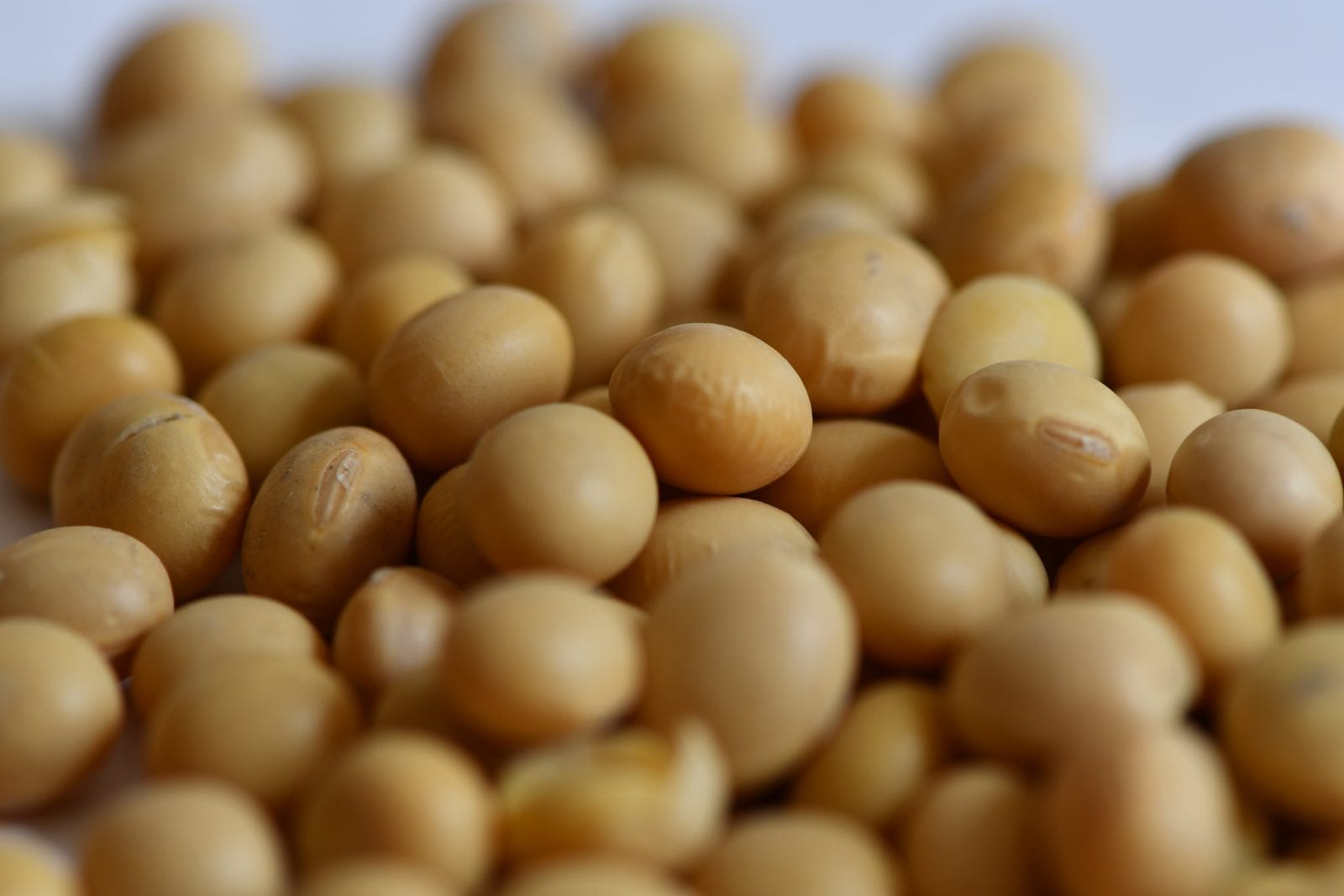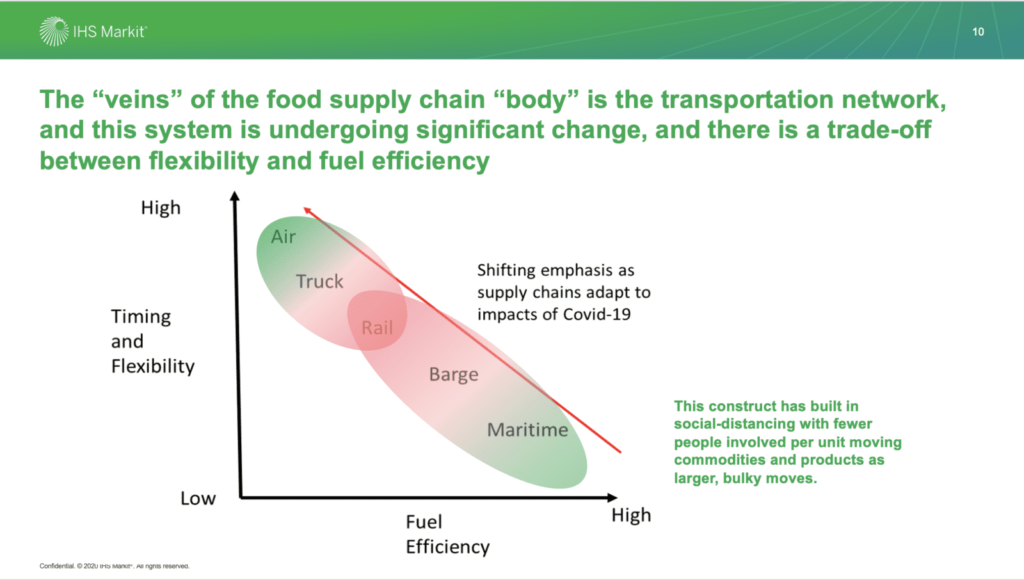Exploring Shifts in U.S. Soy Logistics
- Category:
- General News
- Virtual Events

While it’s no secret COVID-19 has impacted the agricultural industry, its impact reaches beyond market implications. At the 2020 Americas Buyers Conference, Ken Eriksen of IHS Markit explored how the U.S. soy supply chain and its logistics have been affected.
The “veins” of the food supply chain “body” are its transportation network. This is one of many systems currently undergoing significant change. Within the transportation network is a trade-off between flexibility and fuel efficiency. Due to shifts in that tradeoff, more factors must now be considered when deciding between air, truck, rail, barge, maritime and multi-modal transportation.
In the age of COVID-19, some commodities and products must now be transported faster, which may force shippers to choose a more flexible and timely mode of transportation with lower fuel efficiency.
In addition to structural changes, agriculture is also adapting to new social norms. For example, taking social distancing into consideration by having fewer people involved per unit while moving commodities and products.
There are less hands involved in that (moving commodities) as it travels in larger volumes at one time.
-Ken Eriksen, IHS Markit
It’s important that those within the industry begin to recognize both the impacts of COVID-19 and the changes agriculture is experiencing, he explained.
Eriksen said an organization’s ability to be flexible and adapt quickly to changing supply chain dynamics and food consumption patterns will be essential in navigating the industry post-COVID, especially moving into this year’s harvest.
Looking at the supply chain as American growers head toward Harvest 2020, Eriksen said the U.S. crop offers plentiful supplies to be exported around the world.
